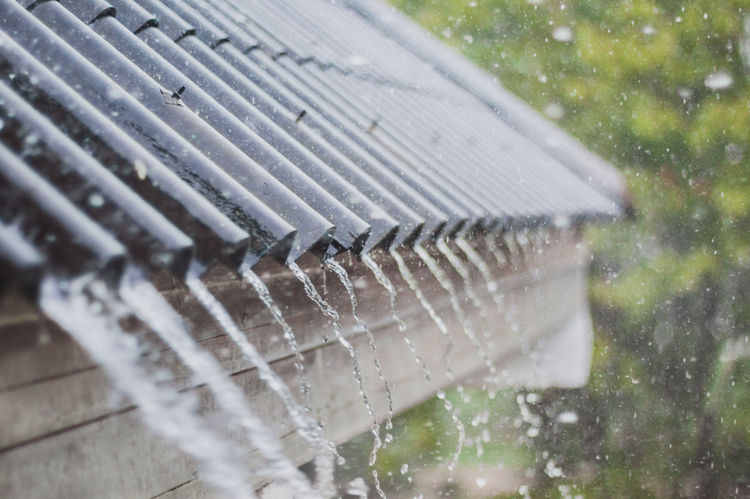What is a Lead Local Flood Authority?
Lead Local flood authorities, or LLFAs as they are commonly called were established under the Flood and Water Management Act in 2010. They are required to “develop, maintain, apply and monitor a strategy for local flood risk management in its area (a “local flood risk management strategy”)”.
What does an LLFA do?
The LLFAs are responsible for reducing the risk of flooding from surface water, groundwater and ordinary watercourses. The LLFA essentially has responsibility to investigate, mitigate and plan for flooding that does not come from statutory main rivers or reservoirs.
The way that LLFAs work varies depending on location and the numbers of staff and in house skills, but broadly they must (at minimum)
-
Maintain a public register of flood risk management assets
-
Undertake a coordinated approach to management of surface water, ground water and ordinary watercourses
-
Investigate and record flood incidents
Respond to major planning applications in relation to sustainable drainage systems (SuDS)
Develop a Local Flood Risk Management Strategy
The local flood risk management strategy (LFRMS) must specifically address the risk management authorities in the area, the flood, coastal and erosion risk management functions which they take responsibility for, along with the objectives for doing so, the measures to be implemented as well as the costs and benefits and method of funding.
The LFRMS is expected to be a comprehensive “one stop” report outlining the roles, responsibilities and and action plan for the LLFA. The local flood risk management strategy must be consistent with the national flood and coastal erosion risk management strategies for England. In addition, it must liaise with the key risk management authorities and the public to reach its conclusions and recommendations.
The LLFA will also be partially responsible for the production of a Surface Water Management Plan (SWMP)

Investigating Flooding Incidents
The Lead Local Flood Authority has a duty to record and investigate all significant flooding events (regardless of source) under Section 19 of the Flood and Water Management Act (2010). Given that there is no agreed-upon national definition of ‘significant’, it is up to the Lead Local Flood Authority to decide what flooding incidents are locally important to them and are worth recording and investigating. By and large, any of the following reports of flooding will trigger an investigation and be classified as significant:
-
five or more dwellings at an urban location experience internal property flooding;
-
two or more dwellings at a rural location experience internal property flooding;
-
where the event resulted in a loss of life, or;
-
where critical infrastructure (e.g. power station, pump station, electricity supply, critical transport route) was affected by flooding for a significant period of time.
LLFAs, flood history and your development
As a result of the fact that the LLFA collects and records these flood incidents, Aegaea will almost always make a data request to the local flood authority to ensure that we have the most up to date and relevant information about flood risk in the location of you site. This means we understand the complete picture of flood risk for you.
The LLFA and SuDS
The flood and water management act of 2010 as gave responsibility for sustainable discharge to the lead local flood authorities, district councils, IDBs and highway authorities. Although each local partners keeps some responsibility, in practice it is often the LLFA that takes the lead role in coordinating and managing SuDS. Therefore, if your application requires SuDS or drainage find out here you will need to engage with the LLFA and likely have to consider the SuDS hierarchy in planning for a sustainable development.
LLFAs, SuDS and your development
The LLFA is a significant consultee for your development. Regardless of flood risk to the site, the proposed development must be designed in such a way that it mitigates, surface water runoff to an agreed standard. This means that you will need to consider the SuDS hierarchy and implementation of management measure to control pollutants. It is worth thinking about this plan early in your planning so that we can ensure that you “make space” for it within the masterplan. The exact methods you use will depend on the size of your development and the requirements specific to the LLFA in your region.
The LLFA and Flood Risk
The LLFA is technically responsible for flood risk management in relation to ordinary watercourses (which are those not classified as main rivers, which the Environment Agency maintains responsibility for). In reality, with constraints on funding and expertise, the LLFA will often request specialist input on flood risk matters on ordinary watercourses from the Environment Agency.
LLFAs, flood risk and your development
Keeping in mind the broad remit of the LLFA, it is likely that engagement and consultation with the LLFA will be required. Aegaea works on an early engagement model with the LLFA (and other stakeholders) to understand what “in principle” guidance and decisions we will need to work with. This enables us to plan a low risk application strategy that will overcome any potential objections and policy issues.
Request your free, expert quote now
Aegaea work alongside home owners, private developers, planning consultants, architects, local authorities, international development agencies and contractors. Aegaea know exactly how to help you.